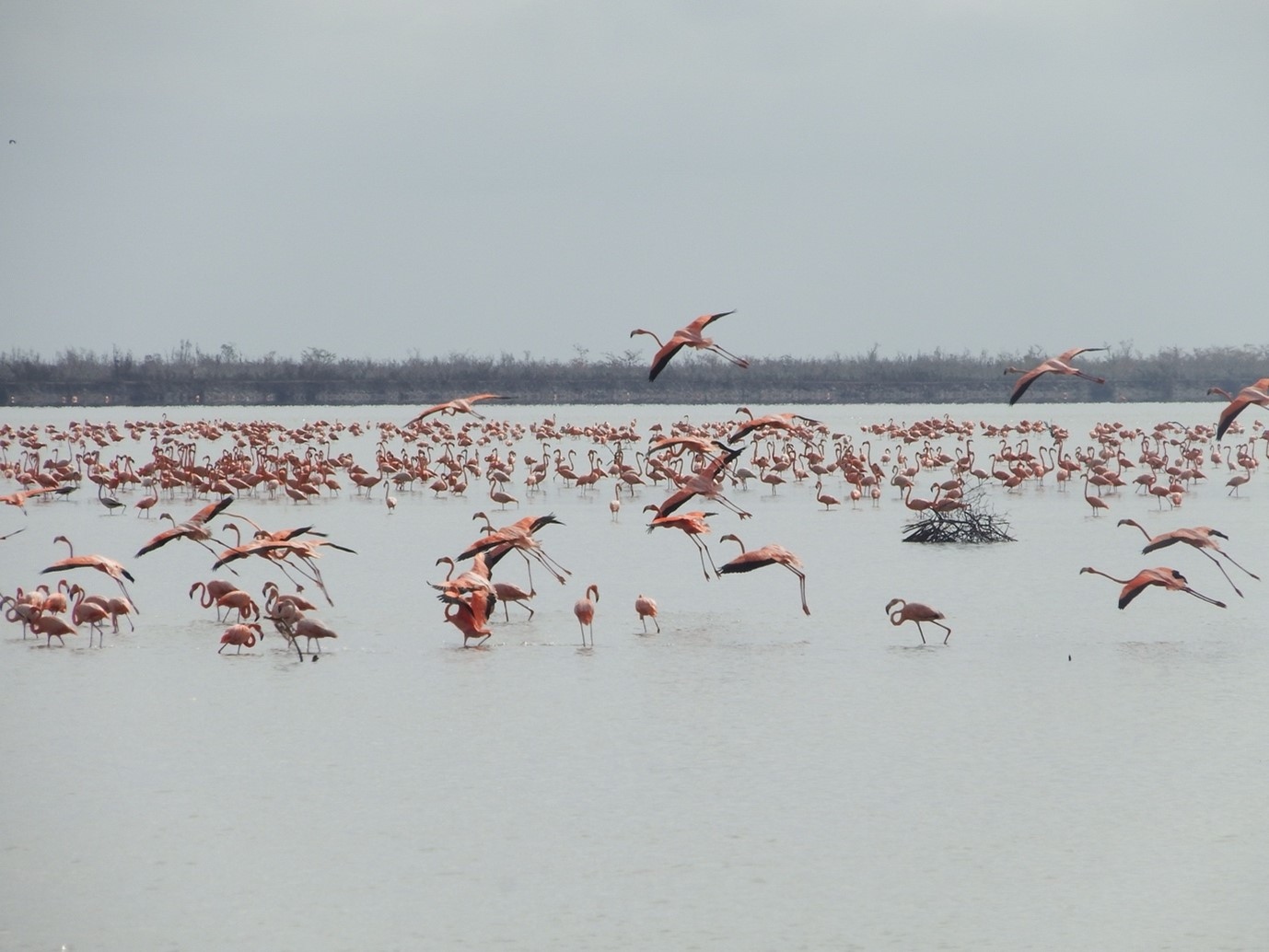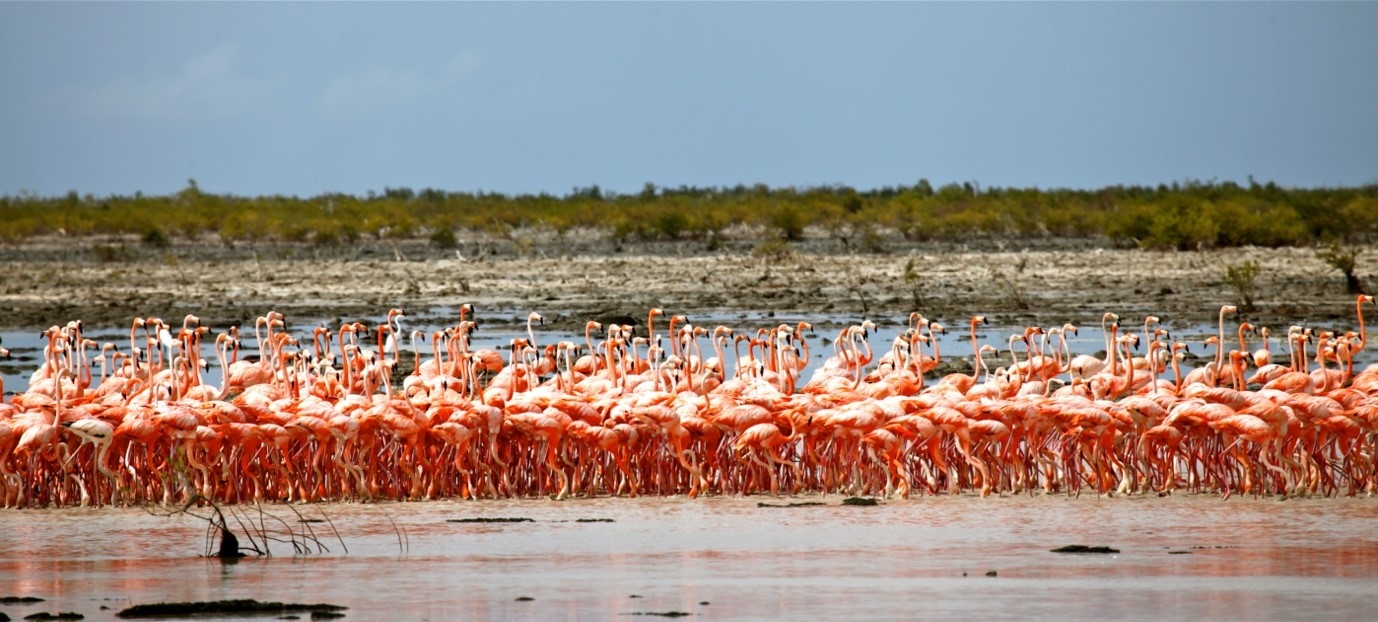How The Bahamas Rescued the Flamingo


Flamingoes taking off, Bahamas National Trust Parks242 blog
There will probably be cut outs of flamingoes around the main table, or chic flamingo keychains as favours for your guests. So yea, it’s clear, we love flamingoes. But did you know they came dangerously close to extinction? It’s true, they actually disappeared from most of their known nesting grounds and caused bird lovers to sound the alarm. The Bahamas played a crucial role in their rescue and now they’re the national bird of our country.
Why flamingoes were at risk
The bird we all picture when we hear the word “flamingo,” the one that’s replicated on planners and preppy clothes, is specifically known as the Caribbean flamingo. There are other types of flamingo as well, like the Andean flamingo and the James’s flamingo. The Caribbean flamingo is native to our region, and in the 1950s there were fewer than 5,000 birds remaining in the whole area – all of them on one island in The Bahamas.
The flamingo population dwindled for a few reasons. One big problem was that people hunted them for their eggs and beautiful coral feathers. Hunting actually wiped out the flamingoes from Florida Bay: they haven’t been seen there since 1903.
In The Bahamas flamingoes lived on Inagua, and were easy prey for wild pigs and locals struggling to make a living. Way back in 1749, French soldiers stationed on Inagua brought pigs with them to the island. Long after the British chased the soldiers away, the pigs remained. Over time they developed a taste for flamingo eggs, trampling their nesting grounds during breeding season – eating and destroying eggs that flamingoes lay only once per year.
Yet another pressure on the flamingoes in the early 20th century was that Royal Air Force pilots would fly low over the flamingoes’ nesting grounds for fun, to watch the birds scatter. Frightened flamingoes were hesitant to nest or lay their eggs.

Flamingo and chick, Bahamas National Trust Parks242 blog
How The Bahamas rescued the flamingo
When the National Audubon Society, based in the U.S., noticed the shrinking number of flamingoes, they sent their research director on a hunt to find out what was happening with the birds. Robert Porter Allen went everywhere there were rumours of nests: Cuba, Haiti and the Dominican Republic, and found nothing. His last hope was Inagua, where he asked two locals, brothers and professional hunters Samuel and Jimmy Nixon, to help him on his quest. Together, they discovered a colony with fewer than 5,000 birds, the largest left in the region.
This was a desperate situation. The Audubon Society formed the Society for the Protection of Flamingoes and hired the Nixon brothers as its first wardens. Flamingo conservation was one of the catalysts for the creation of the Bahamas National Trust in 1959. That year, the Trust took over responsibility for the birds’ fragile colony. In addition to protecting the flamingoes’ nesting ground, it became illegal to eat the birds and to fly less than 2,000 feet above ground.
Flamingoes and the salt industry
Slowly, but surely, the flamingo population recovered, and today there are around 50,000 birds, a number that can swell to 80,000 under favourable breeding conditions. Ours is still the largest colony of Caribbean flamingoes, and one thing that keeps them healthy is their relationship with the local salt industry.
For centuries, Inaguans have made their living harvesting sea salt, and in the late 1950s Morton Salt established a major operation on the island. Matthew Town, the sole settlement, is home to about 900 Inaguans who essentially all work together in the salt industry. Today, they harvest over 1 million tonnes of salt annually, and according to Debbie Farquharson, a secretary at Morton, at least one person in every household works for the company.
Unlike other places that have to mine for salt, harvesting in Inagua is environmentally friendly. Beyond technological upgrades, like using trucks instead of donkeys to transport the salt, the process hasn’t changed all that much over the years. The sun does all the heavy lifting, as the salt is harvested from large reservoirs, called salt pans, through solar evaporation. Lake Rosa, the largest salt pan on the island, is also the flamingoes’ nesting ground. Their droppings cause algae to grow in the salt pans, and algae speed up the evaporation process. Brine shrimp feed on the algae, both cleaning the pans and providing a food source for flamingoes. This diet of brine shrimp is what gives them their bright coral colour, and with a little imagination, you can see how the cycle repeats itself.
 Flock of flamingoes, Bahamas National Trust Parks242 blog
Flock of flamingoes, Bahamas National Trust Parks242 blog
Restoring the flamingo population from near extinction to a healthy population took decades of consistent effort. It’s an incredible and encouraging story of environmental conservation and a huge win for The Bahamas. Now, there are flamingoes on Acklins and Crooked Island, Mayaguana, Andros and Long Island. As for Inagua, older residents remember times when flocks of flamingoes flew overhead in Matthew Town. Although this doesn’t really happen anymore, you can still visit and go bird watching. In fact, with over 140 species of native and migratory birds, Inagua is a bird lover’s paradise. Before you visit, make sure you check out the Bahamas National Trust’s website as a great reference, and consider hiring a certified bird guide to ensure you’re looking in all the right places and not spooking the birds. You could even book an experience with Randolph ‘Casper’ Burrows, grandson of Samuel Nixon and one of the current park wardens.
